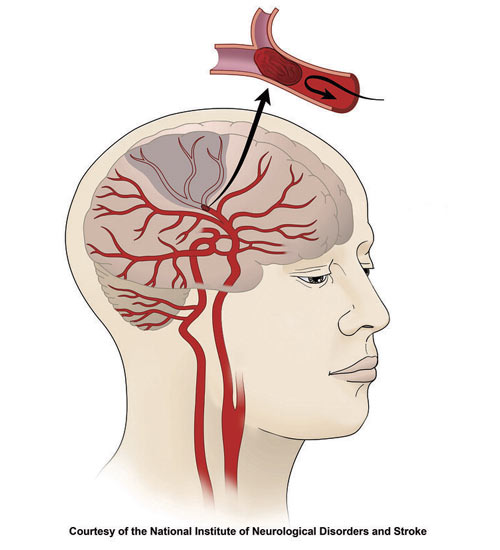Print this page
Use the menu below to jump down to specific sections on this webpage:
Time is Brain | Stroke Signs and Symptoms | How to Spot a Stroke | Training Tools and Quiz

Becoming Stroke Smart means answering just three questions correctly!
Question #1— What is a stroke?
Answer:
A stroke is a medical emergency that occurs when blood flow to parts of the brain is interrupted. Roughly 87% of strokes are ischemic strokes (depicted below, courtesy of the National Institute of Neurological Disorders and Stroke), meaning that a clot blocks blood flow in an artery to the brain where it is needed.
Question #2— What are the signs and symptoms of a stroke?
Answer:
Most strokes involve facial drooping and arm weakness/numbness, especially on one side. Slurred speech is also common. Other symptoms may include sudden onset loss of balance/dizziness, changes in or loss of vision, difficulty speaking or understanding speech, and severe headache. Signs and symptoms depend on where the stroke occurs in the brain and can be different for each person, and for each stroke if a person suffers more than one.
Questions #3— What is the best way to stop a stroke?
Answer:
Call 9-1-1 immediately! Don't drive yourself to the ER (your condition could worsen, causing you to crash and hurt yourself or someone else). Don't call your primary care doctor (waiting for an appointment, even that same day, wastes precious time as treatment must be delivered within 3 hours of onset). Don't have someone else drive you to the hospital (some emergency rooms are not equipped to deliver the necessary treatment).
Effective treatments are available when 911 is called immediately upon onset of symptoms.